Hey there, fellow travelers! If you’re dreaming of turquoise waters, swaying palm trees, and the ultimate tropical getaway, then Oahu is calling your name.
But before you hop on that plane, let’s talk about two incredible regions that often steal the spotlight: Windward and Leeward Oahu. Both sides offer their own unique charm and hidden gems, so whether you’re seeking pristine beaches, epic surf breaks, or lush landscapes that will leave you breathless, this guide will help you choose the perfect paradise for your next adventure.
LocationEastern side of OahuWestern side of Oahu
GeographyLush and green with scenic mountainsDry and arid with coastal plains
LanguageEnglish, HawaiianEnglish, Hawaiian
GovernmentPart of the City and County of HonoluluPart of the City and County of Honolulu
CurrencyUnited States Dollar (USD)United States Dollar (USD)
TourismPopular tourist destinationLess crowded tourist destination
EconomyDiverse economy with tourism, agriculture, and education sectorsPrimarily focused on tourism and military sectors
CultureRich Hawaiian and Polynesian cultural heritageBlend of Hawaiian, Polynesian, and mainland American cultures
AttractionsBeautiful beaches, lush hiking trails, and water activitiesWorld-famous Waikiki Beach, Pearl Harbor, and military landmarks
ClimateModerate and rainyDry and sunny
Get ready to dive into the beauty of Oahu and discover the magic that awaits you on either side of this breathtaking island.
Contrasting Geographical Features
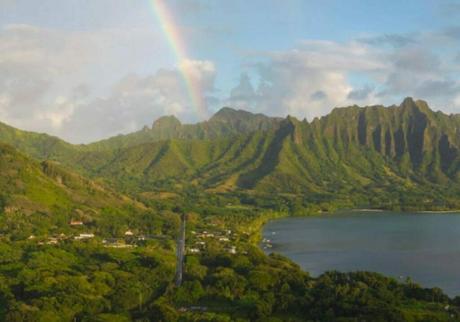
Windward Oahu, etched on the northeastern coast, is known for its jaw-dropping topography. Its lush, emerald-hued cliffs falling dramatically into the azure Pacific Ocean are postcard-perfect. The Koolau Mountain Range, with its sharp ridges, provides a spectacular backdrop, while the tranquil Kaneohe Bay underscores its coastal appeal.
On the other hand, Leeward Oahu presents a distinct panorama. Its southwestern coast is drier, flaunting landscapes where volcanic craters and rock formations rule. The Waianae Mountain Range graces the region with a rugged allure, while its coastlines, albeit less green, display pristine beaches and turquoise waters.
The Windward side’s landscapes are adorned with numerous waterfalls, thanks to abundant rainfall. Each waterfall, from Maunawili Falls to Likeke Falls, adds an enchanting touch to the tropical scenery. Conversely, Leeward Oahu, less rain-kissed, boasts spectacular sunsets and sun-soaked beaches.
These geographical differences between Windward and Leeward Oahu not only shape the regions’ distinct aesthetics but also influence their respective climates, attractions, and activities, providing diverse experiences to Oahu’s visitors and residents.
Climate and Weather Differences
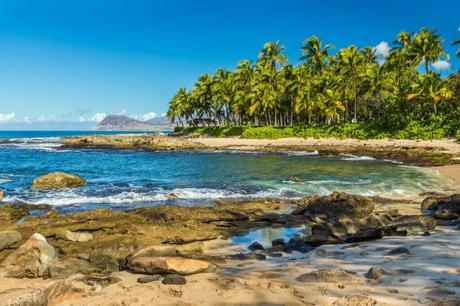
The Windward side, aptly named for its exposure to trade winds, enjoys a cooler, wetter climate. These winds pick up moisture over the Pacific, bringing frequent rain showers to the region. This results in a lush, tropical environment, characterized by vibrant green foliage and refreshing breezes.
In contrast, Leeward Oahu experiences a warmer, drier climate. Its location on the island’s lee side, sheltered from the prevailing trade winds, ensures more sunny days and less rainfall. This microclimate nurtures a different ecological environment, with landscapes more reminiscent of a desert than a tropical paradise.
However, it’s essential to note that Oahu’s weather can be unpredictable. Rain showers can quickly give way to sunshine and vice versa. Yet, the contrast between Windward’s wetter climate and Leeward’s drier conditions significantly influences the types of activities and attractions each side offers.
Despite their differences, both climates contribute to Oahu’s year-round appeal, allowing for various outdoor activities, from surfing to hiking, regardless of the time of year.
Unique Natural Attractions
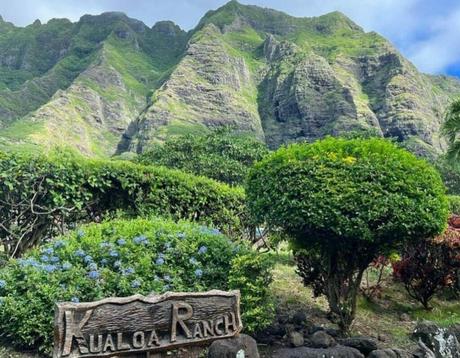
Both sides of Oahu are home to unique natural attractions that leverage their distinctive geographical and climatic conditions. Windward Oahu’s top draws include the iconic Kualoa Ranch, the tranquil Byodo-In Temple, and the scenic Ho’omaluhia Botanical Garden. Each attraction beautifully encapsulates the region’s rich natural heritage.
Conversely, Leeward Oahu is home to the famous Ko Olina Resort, which includes four beautiful lagoons, and Kaena Point, a nature reserve known for its stunning landscapes and wildlife. Both of these attractions showcase the drier, sunnier environment typical of Leeward Oahu.
While Windward’s natural attractions are imbued with a sense of tranquility and enchantment, Leeward’s attractions exude a vibe of luxury and adventure. Whether you prefer exploring pristine trails or lounging by lagoons, each side of Oahu has something unique to offer.
Each attraction, whether it be on the Windward or the Leeward side, plays a role in showcasing Oahu’s rich biodiversity and natural beauty. Despite their contrasting settings, they all offer a piece of paradise that is undeniably Oahu.
Outdoor Activities in Each Region

Outdoor enthusiasts will find no shortage of activities on either side of Oahu. Windward Oahu, with its lush landscapes, offers ample opportunities for hiking, with trails varying from easy to challenging. Kayaking on Kaneohe Bay or taking a boat ride to the Sandbar are other popular activities. And of course, the beaches are perfect for swimming, surfing, and simply relaxing.
In contrast, Leeward Oahu, with its sunnier climate, is a haven for water sports. Here, you can indulge in snorkeling, stand-up paddleboarding, or even diving. Hiking opportunities also abound, especially at Kaena Point. However, perhaps the most relaxing activity is enjoying a beautiful sunset at one of the many beach parks.
In essence, while Windward Oahu lures with its refreshing waterfalls and misty hikes, Leeward Oahu tempts with sun-kissed beaches and marine adventures. The variety of outdoor activities ensures that there’s something for every type of adventurer.
Regardless of the activities you choose, one thing is certain: Oahu’s incredible natural beauty will be your constant companion, turning even the simplest activity into an unforgettable experience.
Cultural Significance of Oahu’s Windward and Leeward
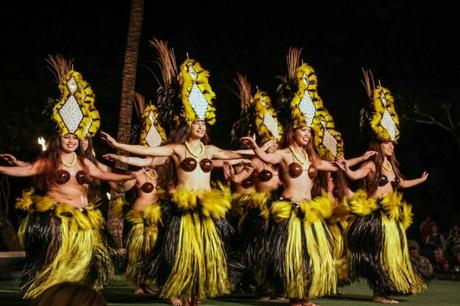
The cultural vibrancy of Oahu transcends its physical boundaries, imbuing both the Windward and Leeward sides with unique cultural significance. Windward Oahu, with its small-town charm, has a strong sense of local community. Towns like Kailua and Kaneohe still retain their old Hawaii feel, and the Polynesian Cultural Center offers an immersive experience into the Pacific Islands’ cultures.
On the other hand, Leeward Oahu is characterized by its blend of local and tourist cultures. Resorts in areas like Ko Olina host traditional luau shows and cultural workshops, providing tourists a taste of Hawaiian culture. Waianae, the largest town on the coast, is home to one of the highest percentages of Native Hawaiians on the island, giving it a rich cultural fabric.
The cultural experiences offered by both sides are deeply rooted in Hawaii’s aloha spirit. Whether it’s through a local farmer’s market in Windward or a luau show in Leeward, visitors get to experience and engage with the island’s rich cultural heritage.
By understanding the cultural significance of both regions, visitors can appreciate the island’s cultural diversity, fostering deeper connections with Oahu and its people.
Planning Your Visit: Windward or Leeward?
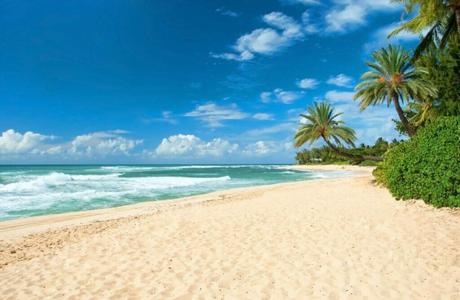
Choosing between Windward and Leeward Oahu largely depends on what you’re looking for in your Hawaiian getaway. If you’re attracted to lush green landscapes, a laid-back vibe, and a strong sense of local community, Windward Oahu might be your best bet. Here, you’ll find a slower pace of life that’s perfect for relaxation and rejuvenation.
However, if you prefer sunny beaches, luxury resorts, and a blend of local and tourist cultures, Leeward Oahu could be your ideal destination. The region’s numerous resorts offer a range of experiences, from water sports to cultural shows, ensuring a fun-filled holiday.
The decision ultimately rests on personal preference. However, one thing’s for certain: whether you choose Windward or Leeward Oahu, you’re guaranteed a memorable slice of paradise. After all, Oahu’s diverse offerings ensure that there’s something for every type of traveler.
No matter where you choose to visit on Oahu, the island’s beauty, warmth, and aloha spirit will undoubtedly make for an unforgettable trip. So why not explore both sides if time permits? After all, variety is the spice of travel, and in Oahu, you’re truly spoilt for choice.
FAQ
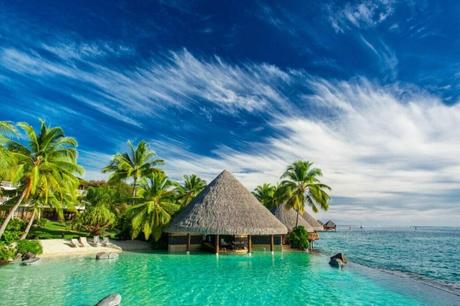
What is the difference between leeward and windward Hawaii?
Windward and leeward are geographical terms used to describe the different sides of an island in relation to prevailing winds. In Hawaii, windward refers to the side of an island that faces the prevailing trade winds, while leeward refers to the side sheltered from these winds. The windward side typically receives more rainfall and is characterized by lush vegetation, steep cliffs, and picturesque waterfalls. In contrast, the leeward side experiences drier and sunnier conditions, often featuring beautiful beaches and arid landscapes.
Which side of Oahu is windward?
The windward side of Oahu is located on the eastern coast of the island. It encompasses areas such as Kailua, Kaneohe, and Waimanalo. Due to the prevailing trade winds blowing from the northeast, this side of Oahu receives more rainfall, resulting in vibrant green valleys, dense forests, and spectacular mountain ranges.
Which side is leeward on Oahu?
The leeward side of Oahu is situated on the western coast of the island. It includes popular areas such as Waianae and Kapolei. Shielded from the trade winds, this side of Oahu experiences drier and sunnier weather conditions, making it ideal for beach lovers and outdoor enthusiasts. The leeward coast is known for its stunning sandy beaches, clear waters, and breathtaking sunsets.

